An exclusive analysis of Spar’s chilled ready meal pilot scheme provides pointers on how to tackle the category widely seen as key to success in convenience. Siân Harrington reports
Fresh and chilled foods are seen as the key to future success for convenience retailers. But how do you balance the opportunity for increased sales with levels of wastage - particularly if your customers’ idea of a ready meal is a visit to the chippy? And is a fresh concept right for your store?
Spar set out to tackle these questions with a 100-store pilot of chilled ready meals across four RDCs, launched six months ago.
The objective was to ascertain the sales opportunity across an array of contrasting trading locations, with the view to introducing the concept nationwide.
Among the areas covered were electronic waste analysis by category, planogramming chilled in a modular format, sales analysis and establishing best practice in reducing stock to clear.
Spar wholesaler Capper & Co took part in the pilot in 19 of its stores. Merchandise manager Matt Teague reveals to The Grocer the results of the first evaluation of the pilot programme.
The test saw the introduction of a total of 50 products. As well as ready meals, desserts and fresh cream cakes, premium cooked meats, premium sausages, a kids’ range, healthy eating products and family packs were introduced.
According to Teague, the average weekly sales of ready meals before the trial was
£196, with a year-on-year increase of 17.2% and the best performing store having weekly sales of £386 thanks largely to a local student population.
During the trial sales jumped to £382, up 128% year-on-year, with the best store delivering £529. However, average waste came to 40%.
Post-trial average weekly sales stand at £323, showing a year-on-year rise of 56% and with the best store delivering £702. Waste was reduced to 9% of sales.
Capper wanted to evaluate how the concept worked in different locations in order to recommend specific solutions. It compared rural village, high street, council estate and mixed housing estate (see table above).
“The star performers were the rural village locations,” says Teague. “These were the main means of food shopping in the village and had the highest sales levels and relatively insignificant wastage after the initial surge.”
The best performer was Staplehurst, with an 82% upsurge in sales to £542 a week but wastage levels up only 13%, equating to £51 a week. The resulting gross profit was just over 21%.
The worst performers were the council estate stores. While the Rhydyfelin store had a 134% increase in sales of ready meals, to £255 a week, wastage was a whopping 116%, or £296. In other words, more was being thrown away than sold.
“These areas had single parent families with a higher than average percentage of smokers,” says Teague, “and consumers consider the local chippy as their idea of a ready meal. The range was perceived as too expensive.”
However, Teague does not believe the results mean convenience retailers should discard any thoughts of selling fresh and chilled ready meals in such areas. The key is to have an approach specifically tailored to these stores.
“To attract customers we need a better value proposition, like a Tesco Value range or two for £3 multibuy,” he says.
The most frustrating of all the results was for mixed housing estates. Indeed, the Bulwark store made a negative gross profit as a result of the high proportion of ready meals sold at a reduced price. These stores need to fight against the wide choice offered by local multiples.
“There is enormous potential for top-up but a wider range is needed to keep shoppers local,” Teague explains. He suggests the range must meet the needs of those without a car while offering a width that takes in value to premium in order to compete with the multiples.
High street locations also provided conflicting messages. Sales at Caerphilly Road in Cardiff increased 120% but waste was high at 49%.
“Consumers here are spoilt for choice, with access to the multiples. Careful consideration needs to be given and casual management of fresh foods will result in high waste in these stores,” says Teague.
In contrast, a comparable store in Caerleon Road in Newport performed better as customers have to go into the centre of the town to access the multiples.
While each store location requires a different fresh strategy, the overriding message from the trial is that more needs to be done to create consumer confidence in a fresh offer from independent convenience retailers.
Penetration was low across all locations, with an average of 3% of customers making purchases.
“Shoppers need trust to purchase fresh foods,” says Teague.
But get it right and it will pay dividends. According to Teague, customers who buy ready meals spend double that of non-purchasers. The link with fresh produce as a complete meal solution can also be explored further, he says.
And other products introduced during the test also performed well, with premium cooked-meats, premium sausages and cheesecakes selling particularly well. More products are to be added, says Teague.
The way forward now is to extend the trial. “We need more stores involved so that suppliers will take us seriously,” says Teague.
“Our multiple competition is getting closer and stronger and they have all the tools. Knowledge gained from the trial will assist optimum roll out. We don’t yet have all the tools but we have to act now.”
Top tips for fresh
based on Capper findings
Vllage location:
Identify and introduce range quickly
Embrace new range developments. These locations support quick adoption of NPD.
Introduce comprehensive promotion to pull in higher percentage of shoppers
High street:
A wider range is needed to compete with multiple competition
Developments should be embraced on an experimental basis only
Change consumer shopping habits with the view to becoming a destination locally
Council estate:
Only stock top-selling lines
Only have traditional and value elements
Mixed profile housing estates:
Wider range to keep shoppers local
New lines can be introduced with a modicum of comfort
Value offer needed
Introduce a comprehensive marketing package to change consumer habits
Fresh and chilled foods are seen as the key to future success for convenience retailers. But how do you balance the opportunity for increased sales with levels of wastage - particularly if your customers’ idea of a ready meal is a visit to the chippy? And is a fresh concept right for your store?
Spar set out to tackle these questions with a 100-store pilot of chilled ready meals across four RDCs, launched six months ago.
The objective was to ascertain the sales opportunity across an array of contrasting trading locations, with the view to introducing the concept nationwide.
Among the areas covered were electronic waste analysis by category, planogramming chilled in a modular format, sales analysis and establishing best practice in reducing stock to clear.
Spar wholesaler Capper & Co took part in the pilot in 19 of its stores. Merchandise manager Matt Teague reveals to The Grocer the results of the first evaluation of the pilot programme.
The test saw the introduction of a total of 50 products. As well as ready meals, desserts and fresh cream cakes, premium cooked meats, premium sausages, a kids’ range, healthy eating products and family packs were introduced.
According to Teague, the average weekly sales of ready meals before the trial was
£196, with a year-on-year increase of 17.2% and the best performing store having weekly sales of £386 thanks largely to a local student population.
During the trial sales jumped to £382, up 128% year-on-year, with the best store delivering £529. However, average waste came to 40%.
Post-trial average weekly sales stand at £323, showing a year-on-year rise of 56% and with the best store delivering £702. Waste was reduced to 9% of sales.
Capper wanted to evaluate how the concept worked in different locations in order to recommend specific solutions. It compared rural village, high street, council estate and mixed housing estate (see table above).
“The star performers were the rural village locations,” says Teague. “These were the main means of food shopping in the village and had the highest sales levels and relatively insignificant wastage after the initial surge.”
The best performer was Staplehurst, with an 82% upsurge in sales to £542 a week but wastage levels up only 13%, equating to £51 a week. The resulting gross profit was just over 21%.
The worst performers were the council estate stores. While the Rhydyfelin store had a 134% increase in sales of ready meals, to £255 a week, wastage was a whopping 116%, or £296. In other words, more was being thrown away than sold.
“These areas had single parent families with a higher than average percentage of smokers,” says Teague, “and consumers consider the local chippy as their idea of a ready meal. The range was perceived as too expensive.”
However, Teague does not believe the results mean convenience retailers should discard any thoughts of selling fresh and chilled ready meals in such areas. The key is to have an approach specifically tailored to these stores.
“To attract customers we need a better value proposition, like a Tesco Value range or two for £3 multibuy,” he says.
The most frustrating of all the results was for mixed housing estates. Indeed, the Bulwark store made a negative gross profit as a result of the high proportion of ready meals sold at a reduced price. These stores need to fight against the wide choice offered by local multiples.
“There is enormous potential for top-up but a wider range is needed to keep shoppers local,” Teague explains. He suggests the range must meet the needs of those without a car while offering a width that takes in value to premium in order to compete with the multiples.
High street locations also provided conflicting messages. Sales at Caerphilly Road in Cardiff increased 120% but waste was high at 49%.
“Consumers here are spoilt for choice, with access to the multiples. Careful consideration needs to be given and casual management of fresh foods will result in high waste in these stores,” says Teague.
In contrast, a comparable store in Caerleon Road in Newport performed better as customers have to go into the centre of the town to access the multiples.
While each store location requires a different fresh strategy, the overriding message from the trial is that more needs to be done to create consumer confidence in a fresh offer from independent convenience retailers.
Penetration was low across all locations, with an average of 3% of customers making purchases.
“Shoppers need trust to purchase fresh foods,” says Teague.
But get it right and it will pay dividends. According to Teague, customers who buy ready meals spend double that of non-purchasers. The link with fresh produce as a complete meal solution can also be explored further, he says.
And other products introduced during the test also performed well, with premium cooked-meats, premium sausages and cheesecakes selling particularly well. More products are to be added, says Teague.
The way forward now is to extend the trial. “We need more stores involved so that suppliers will take us seriously,” says Teague.
“Our multiple competition is getting closer and stronger and they have all the tools. Knowledge gained from the trial will assist optimum roll out. We don’t yet have all the tools but we have to act now.”
Top tips for fresh
based on Capper findings
Vllage location:
Identify and introduce range quickly
Embrace new range developments. These locations support quick adoption of NPD.
Introduce comprehensive promotion to pull in higher percentage of shoppers
High street:
A wider range is needed to compete with multiple competition
Developments should be embraced on an experimental basis only
Change consumer shopping habits with the view to becoming a destination locally
Council estate:
Only stock top-selling lines
Only have traditional and value elements
Mixed profile housing estates:
Wider range to keep shoppers local
New lines can be introduced with a modicum of comfort
Value offer needed
Introduce a comprehensive marketing package to change consumer habits



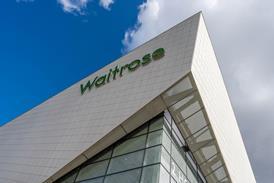
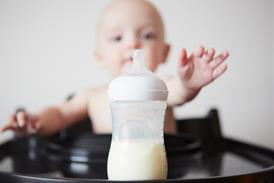


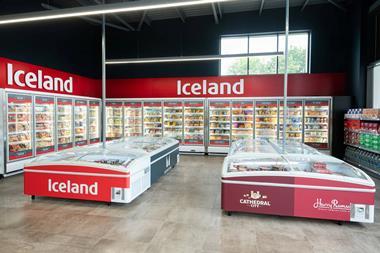






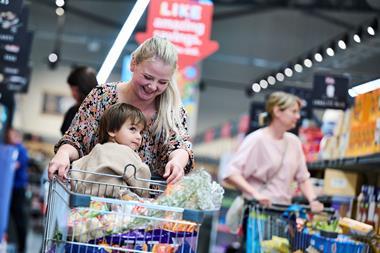
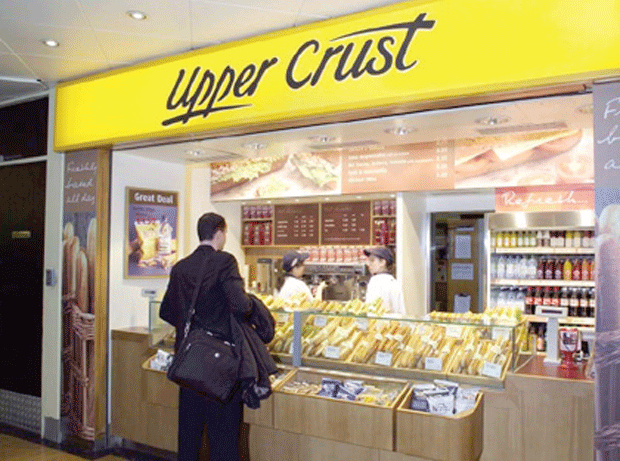
No comments yet